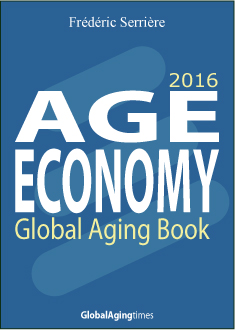The current growth of the population ages 65 and older is one of the most significant demographic trends in the history of the United States. Baby boomers—those born between 1946 and 1964—have brought both challenges and opportunities to the economy, infrastructure, and institutions as they have passed through each major stage of life. Although U.S. Policymakers and others have had many decades to plan for the inevitable aging of the baby boom cohort, it is not clear that sufficient preparations have been made to meet baby boomers’ anticipated needs in old age.
The number of people ages 65 and older in the United States has increased steadily since the 1960s, but is projected to more than double from 46 million today to more than 98 million by 2060. Between 2020 and 2030 alone, the number of older persons is projected to increase by almost 18 million as the last of the large baby boom cohorts reaches age 65. Although much smaller in total size, the number of people ages 85 and older is projected to more than triple from 6 million today to nearly 20 million by 2060.
The number of centenarians, or people age 100 or older, has also increased from around 32,000 in 1980 to more than 53,000 by 2010.1 If life expectancy at older ages continues to rise in the United States, then the number of centenarians could increase to more than 600,000 by 2060, although they would still make up less than 1 percent of the population ages 65 and older for that year.
While the youngest members of the baby boom generation will not turn 65 for another 15 years, recent declines in fertility and in immigration to the United States due to the Great Recession have accelerated growth in the share of the population that is ages 65 and older. In 1960, only 9 percent of the population was age 65 or older, while more than one-third (36 percent) was under age 18. By 2014, children made up less than one-fourth of the total population (23 percent), while those ages 65 and older made up 15 percent, or nearly onesixth of the total. In 2008, U.S. Census Bureau projections showed the number and share of children exceeding that of the older population every year through 2050, while more recent projections show the number and share of the older population surpassing that of children by 2035.
The future size of the older population, relative to the population of children and working-age adults, will depend in part on trends in immigration. The latest projections from the Census Bureau assume that the net number of annual immigrants—most of whom are working-age adults—will peak at around 1.5 million per year by 2060. But if future immigration levels are higher than the current Census Bureau projections, the future size of the older population would be reduced relative to younger age groups.
Health and Well-Being By many measures, the U.S. older population is healthier than previous generations. Older adults are living longer, disability is less prevalent at the oldest ages, and old age is less likely to mean death or loss of physical or mental functions. But there are wide gaps in the health of older adults among different racial/ethnic groups. And Americans have shorter life expectancies, on average, compared with people in most other high-income countries. The increase in life expectancy has also been accompanied by an increase in older Americans living with chronic conditions. There are signs that baby boomers who are approaching retirement age are in worse health compared with previous generations. Changes in physical health among older adults are important not only because they can affect daily activities and the need for long-term care, but also because of the potential long-terms effects on mental health and happiness in old age.
Life expectancy
Americans live longer than they did in the past, but life expectancy in the United States continues to lag behind that of many other high-income countries. U.S. life expectancy increased from 68 years in 1950 to 79 years in 2013, in large part due to the reduction in mortality at older ages. But as of 2012, the United States ranked 27th out of 34 Organization for Economic Cooperation and Development (OECD) countries in overall life expectancy. Lower life expectancy in the United States reflects, in large part, early deaths related to higher rates of tobacco use and obesity compared with other countries, according to recent studies by the National Research Council.
There are wide gaps in life expectancy across different racial/ ethnic groups. At age 50, white men in the United States may expect to live (on average) another 30 years and white women another 33 years. However, older black men and women may not expect to live as long—27 and 31 years, respectively. Conversely, African Americans who survive until age 85 may expect to live slightly longer than whites of the same age.
Although the white-black mortality gap has persisted over time, there are signs that this gap is starting to narrow. Between 1999 and 2013, mortality rates have increased among white, middle-aged men and women in the United States, partly because of rising death rates from drug and alcohol abuse (including prescription painkillers), suicide, and chronic liver diseases and cirrhosis. During the same period, mortality rates among blacks and Latinos have continued to fall.
Women in the United States continue to live longer than men, on average, but the gender gap in life expectancy has narrowed in recent years.
Disability and healthy aging
Healthy life expectancy at age 70—the number of years a person may expect to live disability-free—has been on the rise. Between 1992 and 2008, overall life expectancy at age 65 increased by 1.3 years while disability-free life expectancy increased by 1.8 years. The increase in life expectancy free of disability has been linked to improvements in the prevention and treatment of certain diseases—especially severe heart disease and vision problems among older adults.
However, disability levels among older adults may increase in the coming years because of relatively high disability rates among baby boomers who are now reaching retirement age. Although baby boomers (ages 51 to 69 in 2015) are living longer than their parents’ generation and are less likely to smoke, have emphysema, or have heart attacks, they are also more likely to be obese or have diabetes or high blood pressure than the previous generation at similar ages. Being either overweight or underweight at older ages may signal health problems. Undernutrition is associated with more deaths after age 70, and obesity is a risk factor for a variety of chronic conditions such as diabetes, hypertension, high cholesterol, heart disease, arthritis, and some cancers. Lifestyle changes such as regular exercise instead of or in addition to medication can be used to manage chronic diseases and weight.
Recent analyses of U.S. obesity trends using the National Health and Nutrition Examination Survey show a significant increase in obesity prevalence among older adults between 1988 and 2012. Among the “young old” (ages 65 to 74), the share of men who were obese increased from 24 percent to 36 percent over the two-decade period from 1988-1994 to 2009-2012. Over the same period, the share of women ages 65 to 74 who were obese increased from 27 percent to 44 percent. Obesity rates also increased among men and women ages 75 and older, although rates were lower for that age group.
Older adults are less active than those in younger age groups, but regular physical activity is important for older adults to stay healthy and disability-free. In a randomized study of older adults with physical limitations, those who participated in a physical activity program over a two-year period were less likely to experience a major disability compared with those who participated in a health education program.
Article written with information of this report : Aging in the united states


